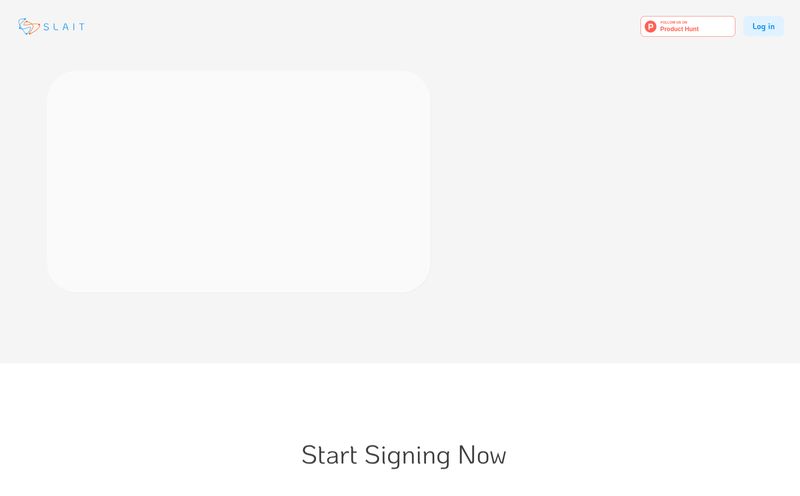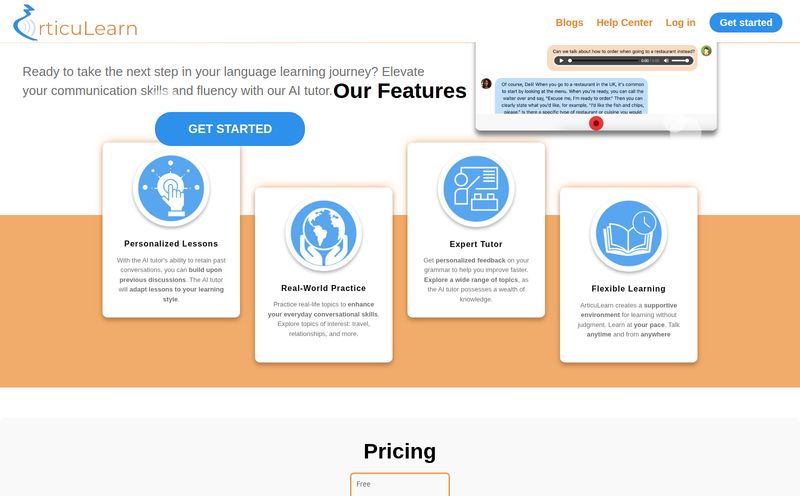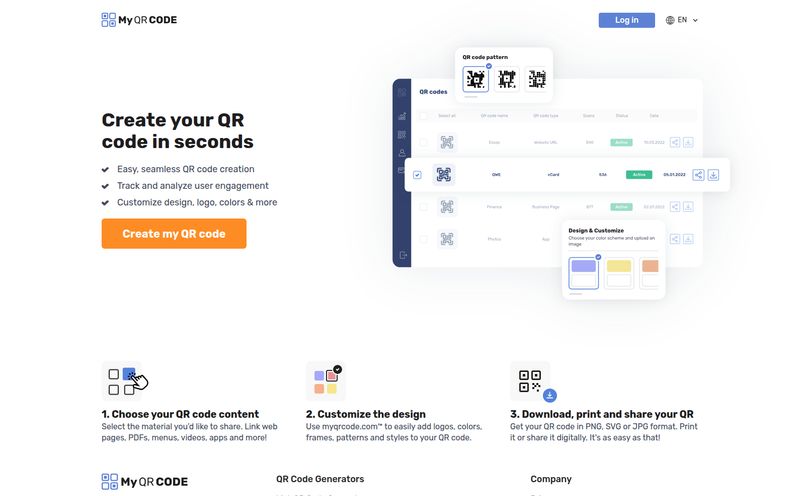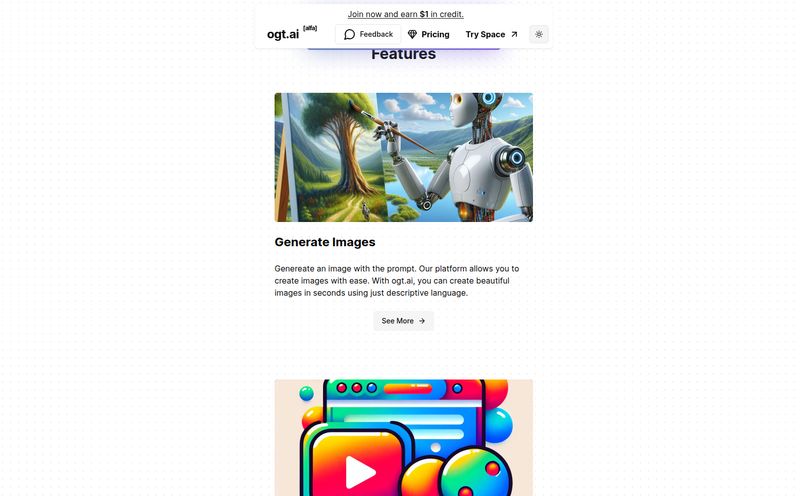We've all been there. It's 8 PM, your kid is giving you the big ol' puppy-dog eyes, and they ask for a brand new story. Not just any story. A story about their favorite stuffed animal, Sir Reginald, who is also a secret agent, on a mission to find the legendary Gummy Bear of the Amazon. And Sir Reginald needs a sidekick, preferably a talking squirrel named Squeaky.
My brain, at that point in the day, is usually running on fumes and the lingering hope of a quiet cup of tea. Coming up with a coherent plot? Forget about it. For years, as an SEO guy neck-deep in digital trends, I've watched the rise of AI with a mix of fascination and, frankly, a bit of professional skepticism. But when I stumbled upon a tool called Kidzbook.ai, which claims to create personalized children's books, a lightbulb went off. Could this be the answer to my bedtime story woes?
So, I did what any tech-curious, slightly exhausted parent would do. I jumped in. And the results were... interesting.
So, What Exactly is Kidzbook?
In a nutshell, Kidzbook is an AI-powered platform designed to help you create, edit, and even print custom children's stories from your computer. You don't need to be an artist or a writer. The whole idea is that you provide the spark—the characters, the setting, the crazy plot twist—and the AI acts as your personal illustrator and author. It's like having a little Pixar studio on your laptop, ready to whip up a story about Sir Reginald and Squeaky at a moment's notice.
The platform lets you type in a custom prompt, tweak things like the reading level, and then it generates a complete story with full-color illustrations. Pretty neat, right? But the real test is always in the execution.
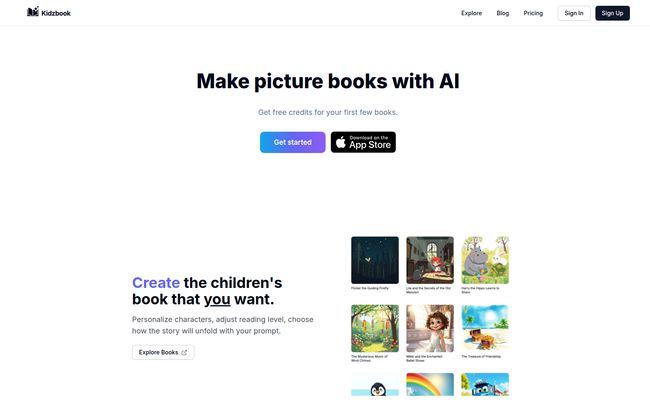
Visit Kidzbook
My First Adventure with the AI Storyteller
Getting started was simple enough. I signed up for the free account and was greeted with a clean, straightforward interface. The prompt box stared back at me, a blank canvas of opportunity. I typed in my prompt: "A brave capybara astronaut named Cosmo who flies a rocket ship made of carrots to a planet made of cheese, where he meets friendly aliens who look like bouncing blueberries."
I hit generate. The little wheel spun. I waited, half expecting a jumbled mess of words and some truly bizarre images. What I got back a minute later was... surprisingly coherent. The story had a beginning, a middle, and an end. The illustrations, in a charming, soft-painted style, actually depicted a capybara in a space helmet and a planet that looked vaguely like swiss cheese. Was it a Caldecott Medal winner? No. But it was a perfectly servicable, cute little story that my kid would absolutely get a kick out of.
I’ve gotta say, that initial moment of creation is pretty magical. It scratches an itch for creativity without the years of art school I never attended.
The Features That Actually Matter
Once the initial novelty wore off, I started digging into the specific features. A tool can be fun, but is it useful? Here's what stood out.
From a Spark to a Storybook
The core AI story and image generation is the main event. You can get pretty specific with your prompts, defining the art style (like 'watercolor' or 'cartoon'), the character's appearance, and the plot points. It’s the engine of the whole operation, and for the most part, it works well. It’s not going to write the next Where the Wild Things Are, but for generating a quick, personalized tale, it's impressive stuff.
Create Bilingual Books Without the Headache
This feature genuinely impressed me. Kidzbook supports translation into about 20 languages, and you can display two languages at once on the page. For bilingual families or parents trying to introduce a second language, this is a fantastic tool. I can see this being a massive help in classrooms, too. It’s a thoughtful feature that goes beyond just the basic story generation.
More Than Just Pixels: Audio and Print Options
Look, we're all trying to reduce screen time. Kidzbook seems to get this. You can turn any book you create into an audiobook with some pretty high-quality AI voices. Even better, you can download your book as a PDF. They have a few layout options, including a clever "Booklet" layout that's formatted for easy printing and folding. I love this. You can have the fun of creating on a screen and then end up with a physical, tangible book for bedtime. That's a huge win in my book.
Here's the Catch: Creative Control and the Paywall
Okay, it can't all be sunshine and carrot rocket ships. The biggest limitation, especially on the free plan, is creative control. The AI is your co-pilot, but sometimes it grabs the controls and flies to a place you didn't quite intend. Maybe the capybara's helmet is the wrong color, or a sentence in the story just feels... off.
This is where the Book Editor comes in. It lets you go in and manually change the text, regenerate specific images you don't like, or modify the image prompts. This is an absolutely essential feature if you're a perfectionist or want to fine-tune the story. And here's the kicker: the Book Editor is not available on the free plan.
This, in my opinion, makes the free plan more of a demo than a truly usable tool for ongoing creation. You can make two books a month, but you're stuck with whatever the AI first gives you. To get the ability to really make the book your own, you have to subscribe.
A Look at the Kidzbook Pricing Plans
This brings us to the all-important question: what's this going to cost me? Kidzbook has a tiered system, which is pretty standard for SaaS platforms these days. Here’s a quick breakdown:
| Plan | Price | What You Get |
|---|---|---|
| Free | $0/month | 2 books/month, 10 image edits/month, No book editor access |
| Starter | $4.99/month | 10 books/month, 100 image edits/month, Book editor access |
| Plus | $9.99/month | 25 books/month, 500 image edits/month, Book editor access |
| Pro | $19.99/month | 50 books/month, 1500 image edits/month, Book editor access |
Honestly, the Starter plan at $4.99 feels like the real entry point. It unlocks the editor and gives you enough credits to play around and create a few polished books each month. The Plus and Pro plans are likely geared towards power users—maybe educators creating materials for a whole class, or even indie authors experimenting with the format.
Who is This Tool Really For?
- Parents and Grandparents: This is the sweet spot. If you want to create a one-of-a-kind birthday gift or just have a new, magical story for bedtime, this is perfect.
- Educators: The ability to create custom stories for specific lessons (or in multiple languages) is a powerful teaching aid. Imagine creating a simple story to explain a science concept.
- Aspiring Authors/Illustrators: It's a great tool for storyboarding, visualizing characters, and quickly mocking up ideas before you commit to drawing them yourself.
- Therapists and Counselors: I could even see this being used to create social stories for children to help them navigate specific situations or emotions.
Is Kidzbook the Future of the Bedtime Story?
So, where do I land on Kidzbook.ai? It's a genuinely cool piece of technology. It's not going to replace the human imagination, and it won’t put classic children's authors out of business. Thank goodness. But that's not its purpose.
Think of it less as an author and more as a fantastically capable creative assistant. It’s a tool that lowers the barrier to entry for creating something personal and special. It takes the pressure off to be a perfect artist or a flawless storyteller and just lets you have fun with an idea. The reliance on a subscription for key features might be a turn-off for some, but for the price of a fancy coffee, you unlock a pretty powerful storytelling machine.
For me, it solved the problem of the space-faring capybara. And for that, I'm grateful. It’s a fun, innovative platform that, if you go in with the right expectations, can add a little bit of custom-made magic to your family's storytime.
Frequently Asked Questions
Can I use the books I make for commercial purposes?
Based on their FAQ, you need to check their specific terms. Generally, content created on AI platforms has tricky usage rights, so it's best for personal use unless you clarify with them directly. Most platforms require a specific commercial plan for that.
What counts as an 'image edit'?
An image edit is typically when you regenerate an image within the Book Editor because you don't like the first version. It uses up one of your monthly credits.
Is it easy to cancel my subscription?
Yes, according to their site, you can cancel your subscription at any time. You'll usually retain access to the paid features until the end of your billing cycle.
Is the AI-generated text safe for kids?
The platform is designed for children's content, so it has filters in place to keep the stories and themes age-appropriate. However, like any AI, it’s always a good idea for a parent to review the content before sharing it.
Can the AI really understand any prompt?
It's very capable, but it's not a mind-reader. The more clear and descriptive your prompt, the better your results will be. A prompt like "a story about a cat" will be much more generic than "a story about a fluffy, ginger cat named Marmalade who is afraid of mice and lives in a cozy bookstore."
